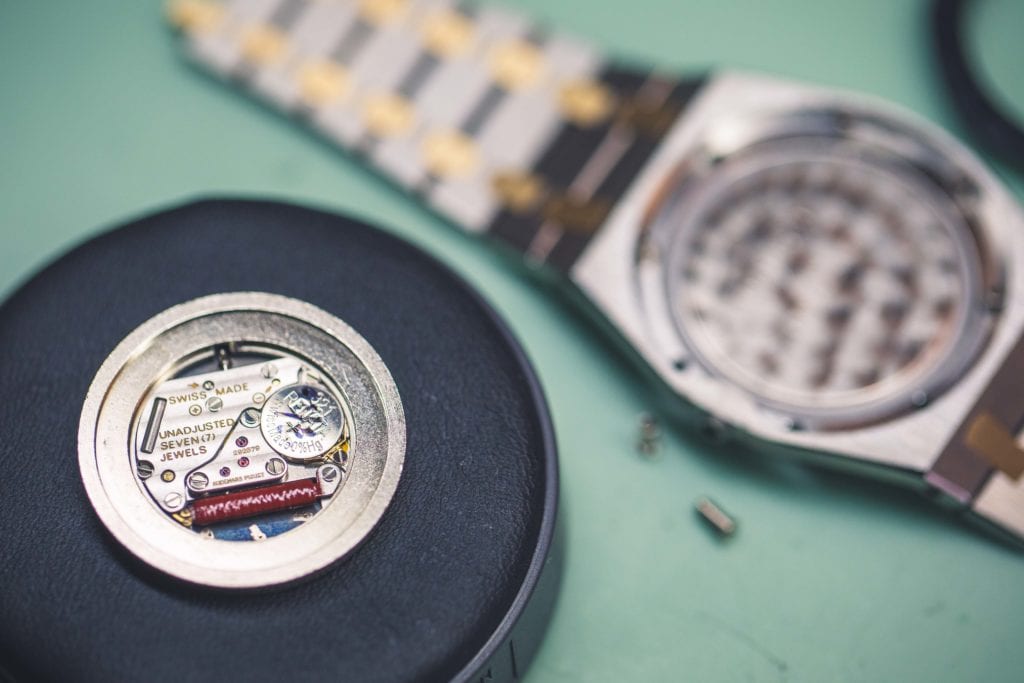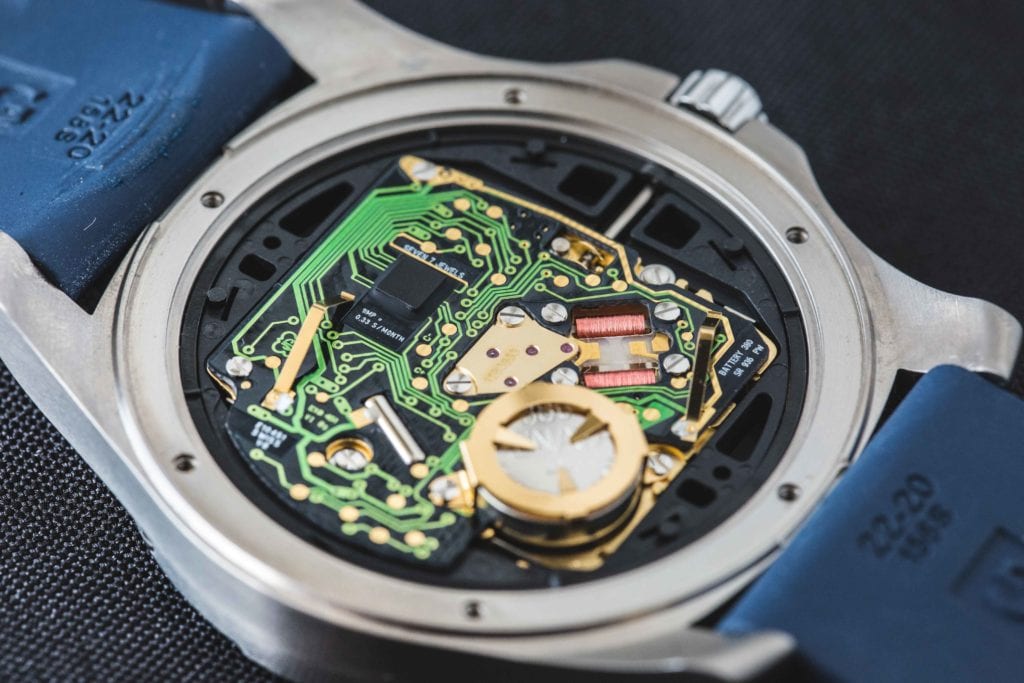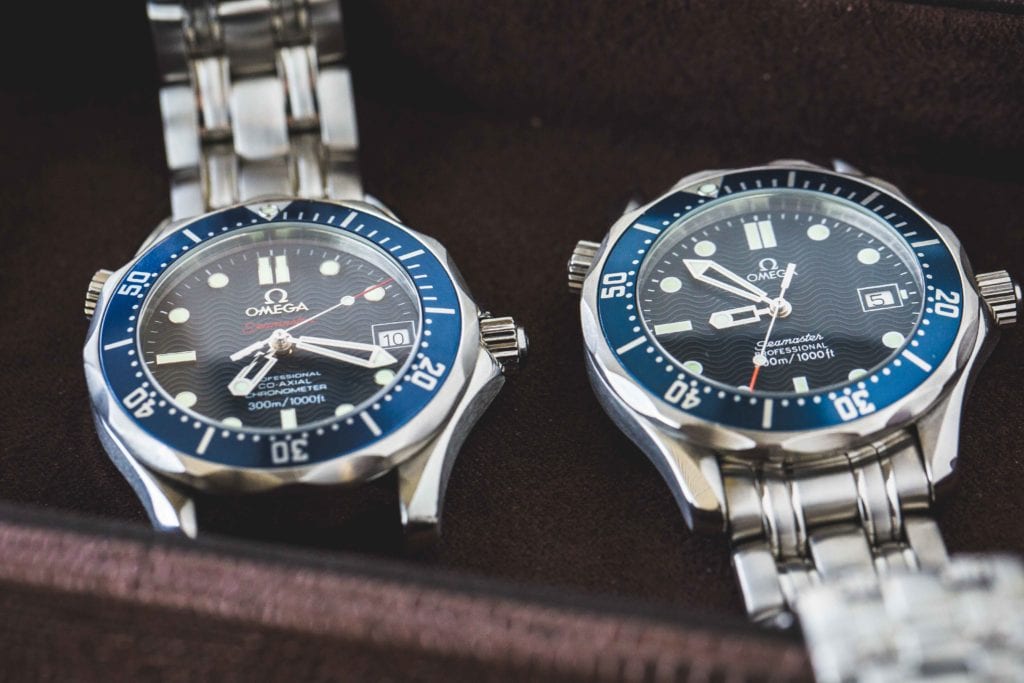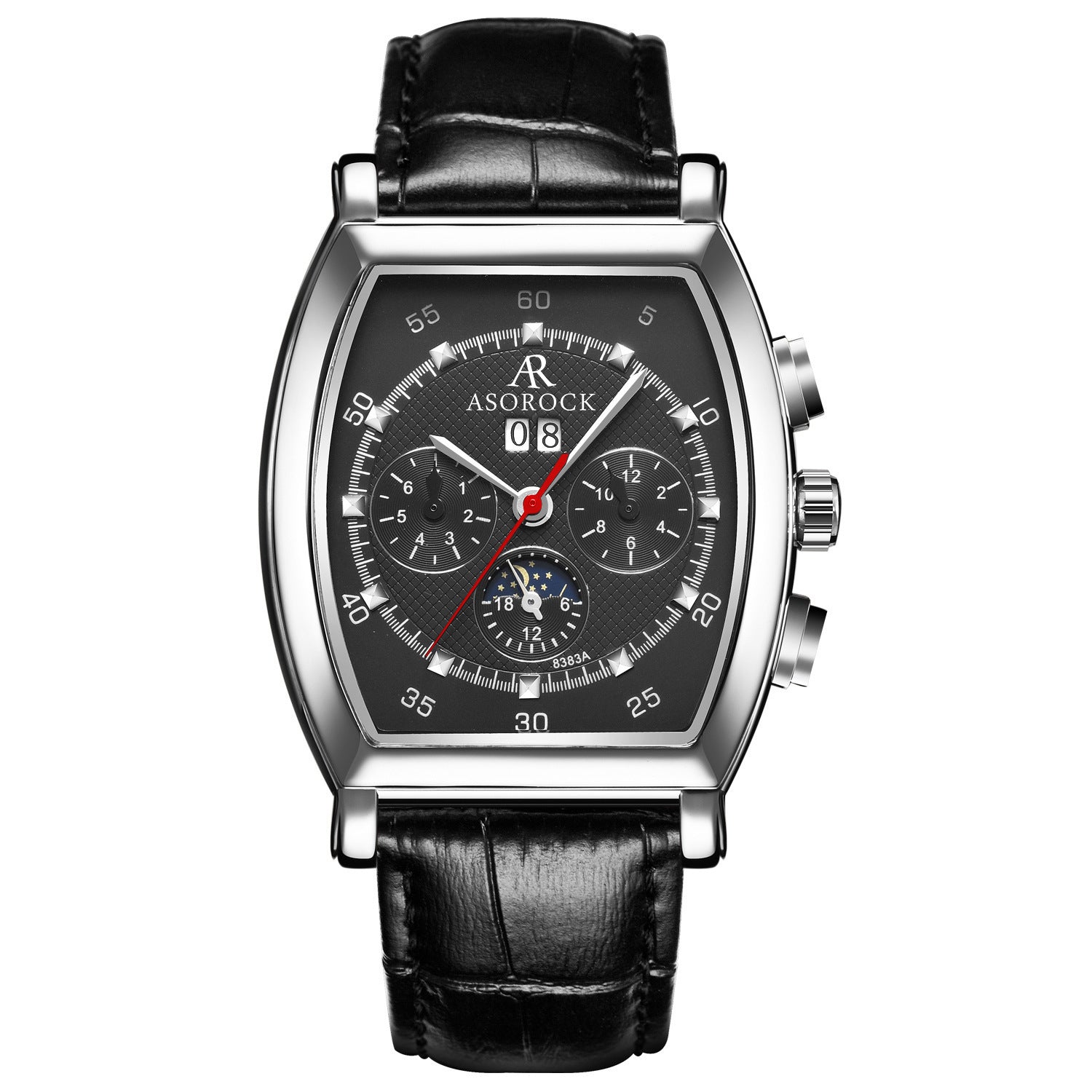Quartz vs. Automatic: The Watch Movements
 The Asorock Ambassador collection with automatic mechanical movement.
The Asorock Ambassador collection with automatic mechanical movement.
Quartz vs. Automatic: The Movements
The late 1960s ushered in a new generation of watchmaking with the introduction of the first quartz movement. This technological breakthrough set off a tumultuous time for the Swiss watch industry. These Japanese-made quartz calibers were less expensive, more accurate, and faster to produce than traditional Swiss mechanical movements. They posed such a threat that the period between the 1970s and 1980s has been dubbed the Quartz Crisis. Even today, as strong as the Swiss market is, many still view quartz movements as inferior to their mechanical counterparts. However, it’s worth taking a step back and examining what a quartz movement really is and how it compares to a traditional automatic movement.

What is a Quartz Movement?
Seiko presented the world’s first mass-produced quartz watch in 1969 called the Astron. However, Bell Telephone Laboratories actually invented the first quartz clock in 1927. A quartz movement is essentially another way of saying a timepiece is battery-powered. In simple terms, a quartz caliber operates via an electrical current from a battery that gives power to the quartz crystal within the movement. This causes it to vibrate, and these vibrations cause the movement to oscillate, which drives the motor. Finally, we see this in the moving hands on the face of a watch.

One main advantage of a quartz caliber is accuracy. Quartz movements are far more accurate than mechanical movements. Another benefit is convenience. Aside from a battery change every couple of years, a quartz watch will continue to run without the need to wear it or wind it. Lastly, watches with quartz movements are less expensive than mechanical watches, especially when you’re considering luxury watches.
Notable Quartz Movements
To counteract the influx of Japanese and American quartz movements, twenty of the top Swiss watch brands decided to join forces. Together, they established the Centre Electronique Horloger (CEH). In 1970, the CEH unveiled the famed Beta 21 quartz movement. You can find it in such timepieces as the OMEGA Electroquartz, the Rolex Oysterquartz, the IWC Da Vinci, and the Patek Philippe 3587. Now, vintage luxury watches equipped with the Beta 21 quartz caliber are highly sought after by watch collectors.
Fast-forward to today, and you can find some of the best quartz movements in luxury watches created by Breitling, TAG Heuer, Cartier, and OMEGA. For instance, take Breitling’s SuperQuartz movements. You can find them in their Colt, Exospace, and Emergency models. They boast ten times more accuracy than a standard quartz movement and are COSC-certified.

BETA 21 QUARTZ MOVEMENT
In 2019 alone, the industry has made some major strides in the evolution of quartz movements. For example, Citizen partnered with Bulova to develop a new concept movement based on the original Accutron. This comes ahead of the iconic model’s 60th anniversary. Citizen also debuted the Eco-Drive Caliber 0100 at Baselworld 2019 – the most accurate wristwatch ever made.
Quartz Movements vs. Automatic Movements
While a quartz movement gets its power from a battery, an automatic mechanical movement uses energy from the motion of a wearer’s wrist. Every time the watch moves, a rotor within the caliber spins and automatically winds the mainspring. This is why you may hear someone refer to an automatic movement as a self-winding movement. Next, the gathered energy releases from the mainspring through a barrel to the gear trains, powering the timepiece. As long as someone wears the watch regularly or keeps it in a watch winder, it’ll continue to have power.

LEFT: AN AUTOMATIC OMEGA SEAMASTER PROFESSIONAL, RIGHT: A QUARTZ OMEGA SEAMASTER PROFESSIONAL
The argument for and against quartz movements is usually a passionate one among watch enthusiasts. However, the innovation that quartz movements have brought to wristwatch production is undeniable. Rather than comparing quartz movements to automatic ones, it’s more sensible to examine and appreciate each as individuals. Both types of movements have brought breakthroughs, discoveries, and advances to the field of watchmaking.
Why Choose Quartz Over Automatic
- Quartz watches are cheaper than automatic watches. It’s because the movements are less labour-intensive to make
- Quartz watches are extremely reliable and accurate when it comes to keeping time; while a good quartz watch may run 20 seconds off per month, a good automatic watch may be off by several minutes in a month
- Quartz watches require very little maintenance; you just need to change the battery every few years. Automatic watches, while they don’t have a battery, need servicing every 3-5 years
Why Choose Automatic Over Quartz
If automatic watches are more expensive, less reliable and accurate, and require more maintenance, why are watch aficionados and collectors so drawn to automatic watches?
Well, there’s a lot of emotion and subjectivity behind this preference. Here are some reasons:
- Automatic movements have a lot of craftsmanship and artistry behind them that has been developed over centuries
- Many mechanical movement makers have deep history and heritage
- Automatic watches are an impressive feat of engineering and there’s an allure to their mechanical character. Think about car enthusiasts’ preference for cars with manual transmissions over those with automatic transmissions, or think about how some people are super passionate about motorcycles but you won’t find the same passion for scooters
- Many automatic watches have a clear sapphire case back that lets you see the automatic movement gently oscillating while it’s at work, which is really cool
- Many people are captivated by the sweeping second hand on automatic watches. While a second hand on a quartz watch moves once per second, a second hand on a mechanical watch moves multiple times a second, giving the illusion of a sweeping motion. This is a sign that the watch is powered by a mechanical movement, and is something that is deeply appreciated by lovers of mechanical watches
Conclusion
Since quartz watches and automatic watches suit different needs and wants, the choice comes down to what you’re looking for.
If you’re interested in browsing Asorock’s collection of quartz watches, you can check our Monolith and speed racer watches here. All use movements from the renowned citizen miyota company, and have top-notch build and finishing; for instance, we use sapphire crystals with anti-reflective coating and Italian vegetable-tanned leather straps.
If you’re interested in browsing Asorock's automatic watches, some are below. And, stay tuned for the asorock villa tourbillion series coming in Q3 2021



2 comments
I have a small collection of watches from quartz, eco-drives, manual wind and automatics. I prefer automatics. The manual winding generally loses time by up to about half a minute each month. The Eco-drives are the most accurate to within a couple of seconds each month. My Seiko 5 automatics generally get to around 5 to 15 second out per month. The worst are the quartz which to a tee always gain between one and two minutes each month. The thing I really like about the automatics is you can leave them in the draw for years, pick them up, give them a quick shake after adjusting the time and date and your good to go without having to worry about whether the sun is out or if the battery is dead or corroded in the watch.
Came here looking for some informative material and ended up willing to be a watch collector"""<a hrefhttp://florencerugs.com.au/> best watch winder
"""

